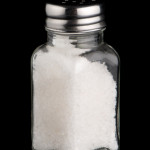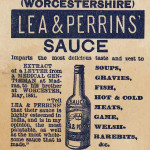Hungry for halibut or craving clams? There’s an easy way to prepare fish and seafood to perfections. Fish is ready when you can flake it easily with a fork. Shrimp and shellfish are done when they are opaque in color.
Bake: Best for fish fillets. Baking or roasting fish is an easy, hands-off method, especially good if you have a crowd to feed. As with any fish cooking technique, follow the recipe to avoid overcooking.
Wrap: Best for any fish fillet and shellfish. Cooking fish in foil is one of the most versatile ways to prepare fish, resulting in moist, flavor-packed dishes. And because you can load up on tasty ingredients, like herbs, citrus and spices, it’s a great way to cut back on fat and sodium without sacrificing flavor. Plus, cleanup is a breeze.
Poach: Best for any fish fillet and shellfish. Poaching simply means gently cooking the fish in liquid, such as water, broth, beer, or wine. It ads subtle flavor without drying out the fillets or adding any extra fat. To poach, simply cover the fish or seafood with liquid and bring to a simmer, just don’t let the liquid boil. You’ll only need a few minutes for your fish or seafood to be ready. You can also use the poaching liquid as a base for a sauce when you’re done.
Broil: Best for thick and meaty fish fillets, shrimp, and lobster tails. This method is especially good when you want to quickly bake fish and seafood. This is also a good method when you don’t have access to a grill or you’re adding a glaze. To make sure it doesn’t cook or brown too quickly, cook the fish at least 6 inches away from the broiler and watch carefully.
Steam: Best for clams and mussels. The traditional cooking method for clams and mussels, steaming is an easy way to add delicate flavor quickly without overcooking. Just add the seafood to a lidded saucepan with a little liquid like beer, wine, or broth, cover and bring to a simmer until the shells open up. Discard any that don’t open. You can also steam lobster, but it’s worth checking to see if your store’s fish department will steam lobsters for you.
Sear: Best for scallops, shrimp, and fish fillets. Use this cooking method for fish with a crisp, browned crust and a tender interior. Use a non-stick pan if possible and add a little oil before adding your fish, in batches if necessary, Don’t crowd the pan. Cook without stirring or turning for 2 to 3 minutes to brown the fish and crisp up any breading.
Grill: Best for any fish fillet or shellfish. Once grilling season rolls around don’t forget to add fish, shrimp, and even clams and mussels to your summer menus. Fish fillets take well to grilling and are easy to flip. Use a grilling basket for anything that might slip through the grate. Don’t forget skewers, which are the perfect way to grill shrimp.
“Work With What You Got!”
©Tiny New York Kitchen © 2020 All Rights Reserved
Let’s face it; most of us eat way too much salt. A high-sodium diet can increase risk of high blood pressure (hypertension), which can lead to cardiovascular and kidney disease. The Dietary Guidelines for Americans recommend limiting sodium intake to less than 2,300 mg per day, which is about 1 teaspoon of salt. The good news is that reducing the amount of salt you use will retrain your taste buds to sense other flavors. You won’t even miss it.
Bland food is such a bore, but how can we keep sodium in check without sacrificing flavor?
Here are some suggestions to reduce salt in your diet:
Remove the salt shaker from the table when you eat.
Limit process foods, including cured, pickled, salted, or brined products.
Focus on fresh or frozen fruits and vegetables without sauces or seasonings.
When choosing canned options, look for “no salt added” or “low sodium.”
Cook at home so you have control over how much salt you add.
Flavored vinegar, onions, garlic, and citrus also add tons of flavor without the sodium.
Herbs and spices are the key to flavor. Add dried varieties during cooking and fresh herbs at the end of cooking or when plating a dish. Thyme, mint, lemongrass, dill, basil, oregano, chives, and parsley are great herbs to use. Spices like pepper, ginger, chili powder, and cinnamon are excellent spices to flavor your food.
“Work With What You Got!”
©Tiny New York Kitchen © 2018 All Rights Reserved
While the Nutrition Fact label can tell you a lot about a food, you need to check the ingredients list to see what you’re really eating. Is your breakfast cereal made with whole grains or does your favorite salad dressing contain oil that is high in saturated fat, for example.
By law, ingredients lists must be ordered by weight. The heaviest ingredient goes first, followed by the next heaviest, and so on. It is not a good sign if sugar is the first ingredient in a cereal or when bad fats like partially hydrogenated soybean and cottonseed oils are the third ingredient listed on a can of biscuit dough.
Below is a list of common phrases found on many food packages:
Cholesterol Free or No Cholesterol: Don’t be fooled by the words No Cholesterol written across the label of a jar of peanut butter or bottle of canola oil. If you turn to the Nutrition Facts label, you’ll see that no brand of either food has cholesterol – and never did! Only foods of animal origin contain cholesterol. But manufacturers hope you don’t know that.
Light: This word is used to describe fat content, taste, or color. If the manufacturer is describing the fat content as “light,” the product has at least 50 percent less fat than the original. The label must also say “50% less fat than our regular product.” “Light” olive oil, on the other hand, describes the oil’s color. The oil is as caloric as regular olive oil, but has been processed to remove some of its flavor. A muffin mix can say “light and fluffy” as a way to describe its texture or consistency.
Low-Fat or Fat-Free: Low-fat products must contain 3 grams or less fat per serving and fat-free products must have less than 0.5 grams of fat per serving. But check the number of calories – that number could be very high. It is easy to gain lots of weight eating fat-free cookies because they are loaded with sugar.
Low Sodium or Light In Sodium: This means that the sodium was cut by at least 50 percent over the original product. Be careful when using a “low” version of a super-high-sodium food such as soy sauce or soup. You can still end up consuming a lot of sodium. Check the numbers on the Nutrition Fact Label.
Sugar-Free, No Added Sugars, Without Added Sugars: A sugar-free chocolate candy may not contain a speck of sugar, but it’s still got plenty of fat and calories. Be sure to check out the Nutrition Facts label to know how many calories and grams of saturated fat you’re consuming.
Sweetened With Fruit Juice, Fruit Juice Sweetener, or Fruit Juice Concentrate: These sweeteners are made by reducing fruit juice (usually grape juice) into a sticky sweetener. These sweeteners are not nutritious. They are just like sugar.
“Work With What You Got!”
© Victoria Hart Glavin Tiny New York Kitchen © 2017 All Rights Reserved
Season With Worcestershire Sauce
Think of Worcestershire sauce as the “Fish Sauce” of American cooking. Worcestershire sauce is probably one of the most underused condiments. The sauce is a fermented mix of vinegar, molasses, anchovies, and other seasonings that adds great flavor to a dish without adding many calories. I often add a splash to salad dressings, marinades, and sauces, or use it to season ground meat for meatloaf or burgers. Just go easy because it’s high in sodium.
"Work With What You Got!"
© Victoria Hart Glavin Tiny New York Kitchen









